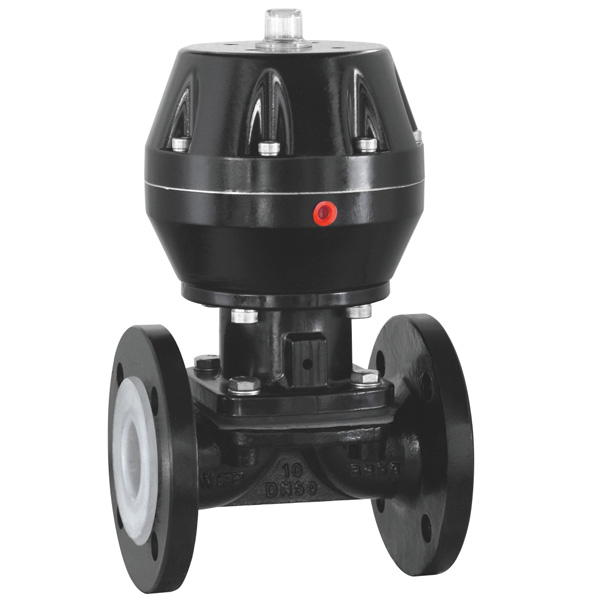PFE-lined diaphragm valve? are pivotal in enhancing performance across the chemical industry due to their superior technical design and material advantages. These valves, featuring a robust PFE lining, deliver unmatched corrosion resistance and thermal stability, particularly in aggressive environments. Offering precision flow control and minimizing downtime, PFE-lined diaphragm valves are engineered for reliability and durability.
For industries handling harsh chemicals like acids, solvents, and alkalis, options such as PTFE lined valves, PFA valves, and Teflon valves provide optimal solutions for safe and efficient processes. Their ability to meet stringent industry standards ensures compliance and operational safety while reducing maintenance costs. Applications span across petrochemical, pharmaceutical, and water treatment sectors, highlighting their versatility.
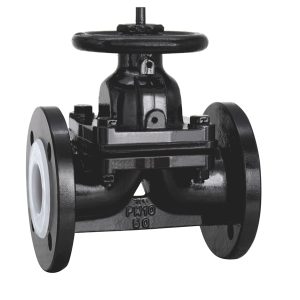
Introduction
The chemical industry operates under some of the most challenging conditions, requiring equipment that can withstand high pressures, extreme temperatures, and exposure to aggressive chemicals. Advanced valve technology is at the heart of maintaining safety, efficiency, and precision in these demanding environments. Among the key innovations are PFE-lined diaphragm valves, which offer exceptional durability and reliability. These valves, designed with a protective PFE lining, excel in resisting corrosion and chemical attack, making them an essential solution for managing highly reactive substances.
Similar technologies, including PTFE lined valves, PFA valves, and PTFE valves, further enhance the flexibility and safety of industrial operations. Known for their robust performance, Teflon valves provide superior flow control and minimal leakage in processes involving corrosive acids, solvents, and alkalis. The importance of PTFE valves lies not only in their chemical resistance but also in their ability to reduce maintenance and ensure compliance with stringent industry standards. Understanding how these advanced valves optimize performance can help chemical processors achieve greater system reliability, reduce downtime, and improve overall productivity.
Section 1: What Are PFE-Lined Diaphragm Valves?
PFE-lined diaphragm valves are a specialized type of industrial valve designed to handle highly corrosive and demanding chemical processes with exceptional efficiency. Constructed with a diaphragm mechanism and a protective PFE (Perfluoroethylene) lining. These valves provide superior resistance to aggressive chemicals and extreme temperatures. The PFE lining acts as a barrier, preventing the valve’s internal components from coming into direct contact with harmful substances. Extending its lifespan and ensuring consistent performance.
Similar technologies like PTFE lined valves, PFA valves, and Teflon valves share this focus on chemical resistance, utilizing materials such as PTFE (Polytetrafluoroethylene) to enhance durability, reduce maintenance needs, and improve operational safety. PTFE valves, in particular, are renowned for their low friction, excellent sealing properties. And ability to maintain precise flow control in industries dealing with substances like acids, alkalis, and solvents. PFE-lined diaphragm valves excel in applications where reliability, compliance with industry standards, and minimal risk of leakage are critical. Making them a go-to solution for chemical processors aiming to optimize their systems with advanced, high-performance valve technology.
Section 2: Why PFE Lining Is Crucial in the Chemical Industry
PFE lining plays a pivotal role in ensuring safety, efficiency, and reliability in the chemical industry. Where processes often involve highly corrosive and aggressive substances. A PFE lining, commonly used in products like PFE lined diaphragm valves, acts as a protective shield against the damaging effects of chemicals. Extending the lifespan and functionality of industrial valves. This lining prevents corrosion, degradation, and material wear. Ensuring the smooth operation of systems handling acids, alkalis, and solvents.
Valves such as PTFE lined valves, PFA valves, and PTFE valves benefit from the unique properties of PFE. Including its exceptional resistance to extreme temperatures and its non-reactive nature. Teflon valves, known for their low friction and secure sealing, leverage PFE and PTFE to minimize leakage and enhance chemical compatibility. Making them ideal for the most demanding processing environments. By incorporating PFE linings, companies in the chemical sector can mitigate risks, maintain compliance with stringent industry standards, and maximize efficiency, significantly reducing downtime and operating costs. This level of protection is crucial not only for the safety of workers but also for the integrity of critical systems in industries that push materials to their limits daily.
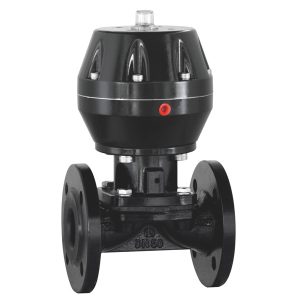
Section 3: Key Benefits of PFE-Lined Diaphragm Valves for the Chemical Industry
PFE-lined diaphragm valves offer a wide range of advantages that make them indispensable in the chemical industry. Wwhere equipment is routinely exposed to hazardous and corrosive substances. One of the most notable benefits of these valves is their exceptional chemical resistance. Which is attributed to the PFE lining that acts as a robust shield against aggressive acids, alkalis, and solvents. This feature not only extends the lifespan of the valve but also minimizes maintenance costs. As the PFE lining prevents corrosion and material degradation. Similarly, PTFE lined valves and PFA valves share this characteristic, offering unmatched durability and reliability in harsh operating environments.
Safety is another critical factor, with Teflon valves and PTFE valves ensuring a secure sealing mechanism that reduces the risk of leaks. Protecting both the process and personnel. Efficiency is further enhanced, as these advanced valves enable precise flow control and consistent performance even under extreme temperature and pressure conditions. By incorporating PFE-lined diaphragm valves into their systems, chemical processors can achieve greater reliability, reduced downtime, and compliance with stringent industry standards. Making these valves an essential component for optimizing modern chemical operations.
Section 4: Applications of PFE-Lined Diaphragm Valves in the Chemical Industry
PFE-lined diaphragm valves are a cornerstone of advanced fluid handling systems within the chemical industry. Thanks to their unmatched versatility, reliability, and ability to perform under extreme conditions. Designed specifically for demanding applications, these valves excel in handling highly corrosive and hazardous materials. Making them a trusted choice for industries processing aggressive chemicals such as acids, solvents, and alkalis. A PFE lined diaphragm valve incorporates a high-performance lining that provides robust protection against chemical attack, greatly increasing the valve’s lifespan and reducing the need for frequent maintenance. PTFE lined valves and PFA valves are other excellent examples of this technology. Offering superior resistance to chemical reactions, which ensures both operational safety and product integrity.
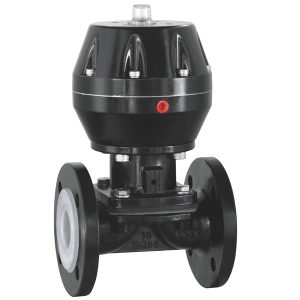
Similarly, Teflon valves, leveraging the unique properties of PTFE and PFA. Provide exceptional sealing capabilities and low-friction operation, enhancing efficiency and minimizing leakage even in highly pressurized systems. PTFE valves, specifically engineered for critical processes, further contribute to maximizing reliability by maintaining consistent performance in extreme temperature and pressure conditions. Across the chemical industry, these valves are instrumental in applications such as chemical synthesis, wastewater management, and the safe transport of volatile substances. By integrating PFE-lined diaphragm valves into their operations. Chemical processors not only comply with stringent safety and environmental regulations but also achieve greater system efficiency, reduced downtime, and lower overall operational costs.
Section 5: Choosing the Right PFE-Lined Diaphragm Valve for Your Needs
Selecting the right PFE-lined diaphragm valve for your needs requires careful evaluation of several critical factors to ensure optimal performance and longevity. One of the foremost considerations is chemical compatibility, as the valve’s lining must withstand the specific corrosive or reactive fluids being processed. A PFE lined diaphragm valve, with its robust lining, offers excellent resistance to aggressive chemicals like acids, alkalis, and solvents, making it ideal for demanding applications.
Additionally, PTFE lined valves and PFA valves provide similar advantages, ensuring durability and preventing material degradation in extreme chemical environments. Matching the valve to operating conditions such as temperature, pressure, and flow requirements is equally important. For instance, Teflon valves, composed of PTFE or PFA, exhibit outstanding thermal stability and low friction properties, making them suitable for high-pressure and high-temperature systems. The intended application also plays a role in the decision-making process; PTFE valves excel in precision flow control, making them a preferred choice in processes requiring consistent and reliable performance, such as chemical synthesis or wastewater treatment. By considering these factors and consulting with experts, you can identify a valve that aligns with your operational goals, minimizes maintenance costs, and ensures compliance with safety and quality standards, ultimately enhancing efficiency across your chemical processes.
Section 6: How PFE-Lined Diaphragm Valves Optimize Efficiency and Safety
PFE-lined diaphragm valves are essential for enhancing both efficiency and safety in the chemical industry, where processes often involve aggressive, high-risk substances. These valves specifically design to handle challenging operating environments, thanks to their exceptional chemical resistance. The specialized PFE lining acts as a protective barrier, safeguarding the valve’s internal components from corrosive substances like acids, alkalis, and solvents. This not only extends the lifespan of equipment but also reduces the frequency of repairs and replacements, thereby optimizing operational efficiency.
PTFE lined valves and PFA valves share similar benefits, making them reliable options for maintaining the long-term integrity of fluid handling systems. Equally, Teflon valves offer superior sealing performance, effectively preventing leaks that could lead to hazardous chemical exposure or environmental contamination. PTFE valves are particularly valued for their ability to maintain consistent operations in systems with extreme temperature and pressure variations, ensuring smooth, uninterrupted processes. By minimizing risks of failure and contamination and enhancing system reliability, PFE-lined diaphragm valves elevate the overall safety standards while streamlining operations, making them an indispensable component in modern chemical processing facilities.
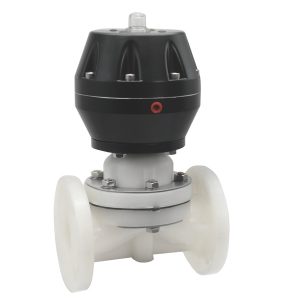
FAQ
Q1. What is the warranty period for your?diaphragm?valve?
Diaphragm valve come with a standard warranty period of 12 months (1 years) from the date of delivery. This warranty covers manufacturing defects and materials under normal operating conditions as specified in the product manual.
Q2. How are pfe lined diaphragm valve prices determined?
Diaphragm valve is influenced by several factors. Including the valve’s size, material composition (e.g., stainless steel, brass, or PVC), pressure ratings, end connection types. And any additional customisation or certifications required. Specialised features such as fire-safe designs or anti-static devices can also impact the cost.
Q3. What is the standard delivery time for a diaphragm valve?
Our standard delivery time for diaphragm valve is 4–6 weeks, depending on the order size and customisation requirements. For urgent requests, we offer expedited delivery options upon request.
Our logistics partners ensure fast and reliable delivery to meet engineering project timelines, regardless of location.
Q4. Common Applications of? diaphragm valve
Diaphragm valve is a versatile valve type designed with three ports for fluid flow. These ports can configure to allow various functions. Such as mixing, diverting, or completely shutting off flow. Many three-way ball valves feature an L-port or T-port design. Which determines how the flow paths are arranged and controlled.
pfe lined diaphragm valve Conclusion
PFE-lined diaphragm valve is critical to optimizing the performance of chemical industry operations by providing superior efficiency, safety, and durability. Their advanced PFE lining ensures exceptional resistance to corrosive substances like acids, alkalis, and solvents, which are prevalent in chemical processes. This unmatched chemical compatibility reduces equipment wear, minimizes maintenance needs, and enhances the lifespan of critical components, thus improving overall system efficiency. PTFE lined valves and PFA valves further bolster performance with their ability to handle extreme operating conditions.Including high temperatures and pressures, ensuring seamless and reliable operation. Teflon valves, known for their tight sealing capabilities, effectively prevent leaks.
Minimizing the risks of hazardous chemical exposure and environmental damage. PTFE valves, in particular, deliver consistent control and adaptability for precision-driven processes like chemical synthesis and fluid transport. By integrating these innovative valve solutions. Chemical processing plants achieve greater operational stability. Comply with stringent environmental and safety standards, and reduce unplanned downtime. Ultimately, PFE-lined diaphragm valves and their variants represent a vital investment in modern chemical industry operations. Streamlining performance while upholding the highest safety and quality measures.

